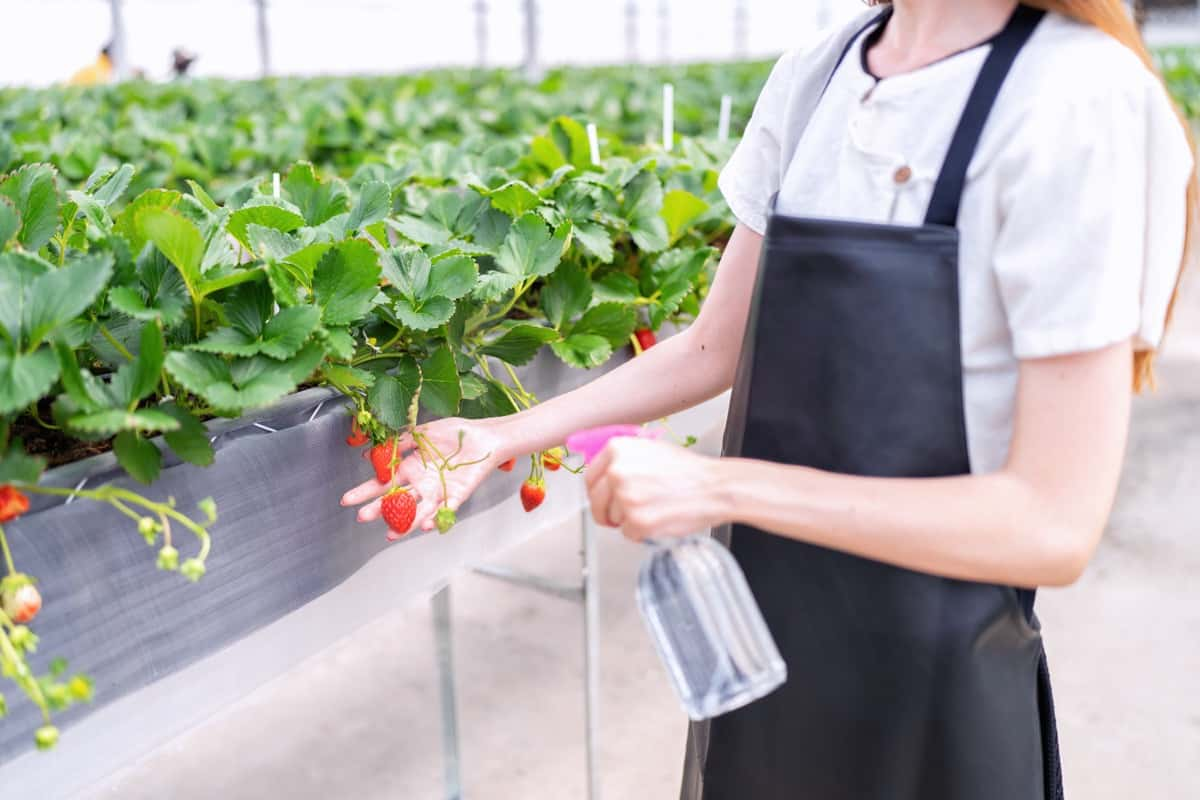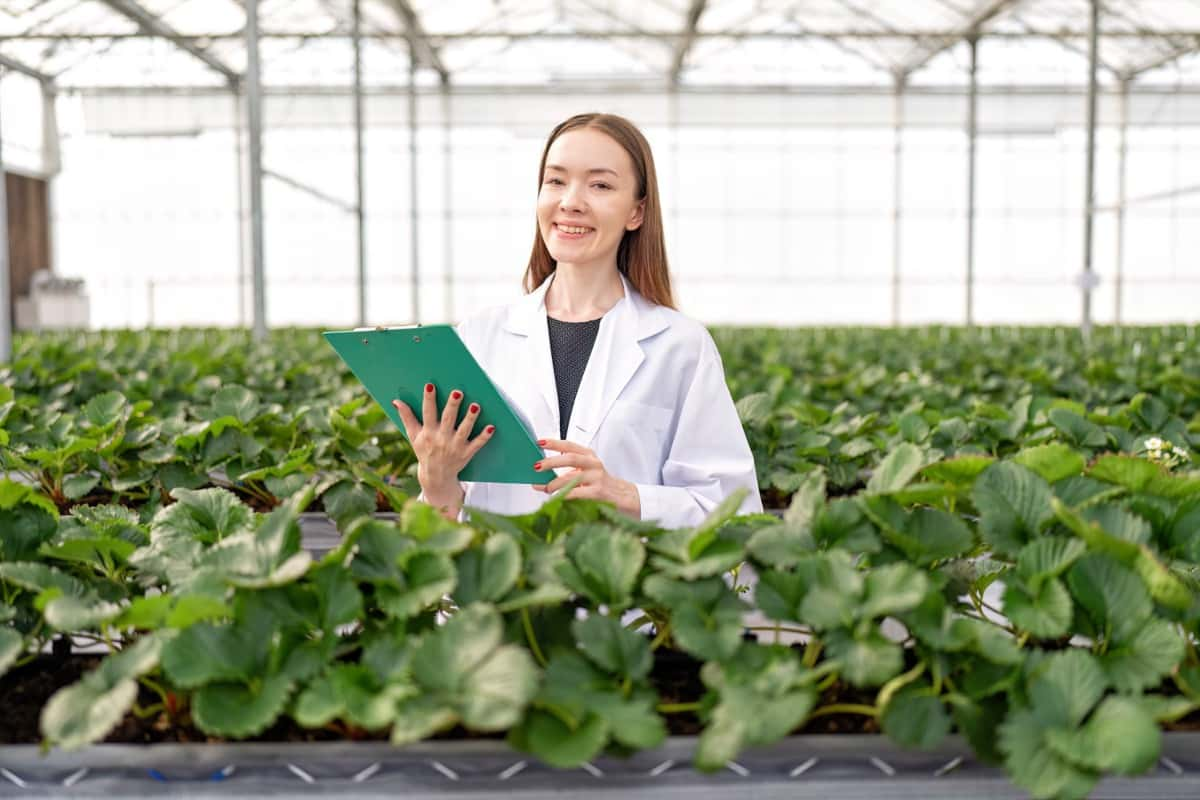Hydroponic gardening is a modern approach to growing plants without soil, utilizing nutrient-rich water solutions. However, gardeners might sometimes face challenges when their hydroponic plants do not fruit as expected. This problem may arise due to several factors, such as nutrient imbalances, insufficient lighting, improper temperature and humidity control, issues with water and oxygen supply, and difficulties with pollination in hydroponic fruiting systems. Addressing these issues is crucial for successful fruit production in hydroponic systems.

This article delves into common reasons why hydroponic plants might not fruit and provides remedies and treatment options to enhance fruit yield, focusing on aspects such as hydroponic nutrient balance for fruiting, light requirements, best temperatures, water quality, pollination techniques, humidity control, pruning for fruit production, pest management, oxygenation, pH levels, manual pollination, system setups, nutrient solutions, stress factors, and seasonal tips.
9 Reasons Why Your Hydroponic Plants Are Not Fruiting
Nutrient Imbalances Affecting Fruit Development
Identifying and Correcting Nutrient Deficiencies
Hydroponic plants depend on a precise nutrient balance supplied through water. Imbalances can hinder fruit production, leading to poor plant health and decreased yields. Regular monitoring and adjusting nutrient levels can help ensure that plants receive the right amount of each essential nutrient.
The Impact of Nutrient Excess on Fruiting
Just as nutrient deficiencies can harm plant fruiting, excess certain nutrients can also be detrimental. For example, too much nitrogen can encourage leaf growth at the expense of fruit development. It’s crucial to ensure a well-balanced nutrient solution tailored to meet the precise requirements of the fruiting plants in your hydroponic setup.
Inadequate Light Conditions
Understanding Light Spectrum Needs for Fruiting
Light is essential for the growth of plants and the development of fruits. The right light spectrum is essential for photosynthesis and for triggering fruiting in plants. Hydroponic systems should be equipped with lighting that provides a full spectrum of light, mimicking natural sunlight as closely as possible.
Adjusting Light Intensity and Photoperiod
Variations in light intensity and duration have a notable impact on a plant’s fruiting capability. Plants may require longer or more intense light periods to initiate and sustain fruiting. Adjusting these factors in your hydroponic system can help promote fruit production.
In case you missed it: Ultimate Guide to Classroom Hydroponics Program: Setup, Curriculum Integration and Maintenance

Incorrect Temperature and Humidity Levels
Optimal Climate Conditions for Hydroponic Fruiting
Temperature and humidity levels greatly influence plant growth and fruiting. Each plant species has its preferred climate conditions for optimal fruit development. Monitoring and adjusting the temperature and humidity within your hydroponic setup can create a more conducive environment for fruiting.
Managing Environmental Controls
Modern hydroponic systems often come equipped with environmental controls that allow gardeners to fine-tune the conditions within the growing area. Properly managing these controls can help maintain the ideal climate for your hydroponic plants to thrive and produce fruit.
Water and Oxygen Supply Issues
Ensuring Proper Water Quality and pH Level
The water quality used in hydroponic systems is vital for plant health and fruiting. Water should be pure and devoid of any detrimental substances, with its pH level tailored to meet the requirements of the particular plants under cultivation. Regular testing and water quality and pH adjustment can prevent issues that might inhibit fruiting.
Oxygenation Techniques for Root Health
Oxygenation of the nutrient solution is essential for healthy root development, supporting overall plant health and fruiting. Implementing techniques to increase oxygen levels in the water can promote better root health and, consequently, better fruit production.
Pollination Challenges in Hydroponics
The Role of Pollination in Fruit Setting
Many plants require pollination to produce fruit. In hydroponic systems, where natural pollinators like bees may not be present, gardeners might need to assist with pollination.
Methods for Encouraging Pollination Indoors
In indoor hydroponic settings, employing manual pollination methods like transferring pollen between flowers with a small brush can yield positive results. Alternatively, introducing pollinators into the indoor environment or using pollination fans can help ensure that plants are adequately pollinated and can set fruit.
In case you missed it: Homemade Natural Pesticides for Hydroponics: DIY Preparation Recipes

Plant Stress and Its Effects on Fruiting
Identifying Stress Factors in Hydroponic Systems
Plants under stress may not fruit well. Stress factors include incorrect nutrient levels, poor water quality, inadequate light, and unsuitable temperature or humidity. Identifying and addressing these stressors is key to improving fruit yield in hydroponic systems.
Strategies to Minimize Plant Stress
Implementing proper management practices, such as regularly monitoring system parameters, providing adequate care, and ensuring optimal growing conditions, can help reduce stress on hydroponic plants and promote healthy fruiting.
Pruning and Training for Better Yield
Effective Pruning Techniques to Promote Fruiting
Pruning hydroponic plants for fruit production is critical to managing a hydroponic garden. By removing unnecessary leaves and non-fruiting branches, gardeners can direct the plant’s energy towards fruit development, leading to higher yields. It’s important to learn the correct pruning techniques specific to each plant type to avoid plant stress and damage.
Training Plants for Optimal Light Exposure
It’s crucial to ensure every section of the plant receives sufficient light for optimal growth and fruit production. Training plants by gently guiding their growth direction can help maximize light exposure to all parts of the plant. Techniques such as trellising or using plant supports can ensure that plants grow in a manner that optimizes light absorption, which is crucial for photosynthesis and fruit development.
Pest and Disease Management
Common Pests and Diseases That Affect Fruiting
Hydroponic setups are vulnerable to pests and diseases, posing a threat to plant vitality and fruit production. Identifying common pests and diseases that affect hydroponic fruiting plants is the first step in managing these issues. Regular inspections of the plants can help in the early detection and treatment of such problems.
Integrated Pest Management (IPM) for Hydroponics
IPM involves using biological, cultural, physical, and chemical methods to manage pests and diseases, minimizing plant and environmental harm. This approach can include introducing natural predators, maintaining hygiene in the hydroponic setup, and using organic pesticides as a last resort.
Plant Variety and Genetic Factors
Choosing the Right Varieties for Hydroponic Fruiting
Not all plant varieties are well-suited for hydroponic cultivation, especially for fruiting. Selecting hydroponic fruiting varieties that are known to perform well in soilless systems can make a significant difference in the success of the hydroponic garden. Researching and choosing specifically bred varieties or known to thrive in hydroponic conditions can lead to better fruit production.
Understanding Genetic Limits on Fruiting
Some plants may have genetic limitations that affect their fruiting potential in hydroponic systems. Understanding these genetic factors and selecting plant varieties with desirable fruit-fruiting traits can help optimize yields. Breeders are continuously developing new varieties with improved fruiting capabilities for hydroponic systems, so staying informed about the latest developments in plant genetics can be beneficial.
In case you missed it: Hydroponic Bok Choy: DIY Setup, Instructions to Grow, Exploring Water EC to pH

Conclusion
Understanding and addressing the multifaceted challenges of hydroponic fruiting, from nutrient balance and environmental conditions to pollination and plant genetics, is essential for a successful harvest. Implementing targeted strategies such as proper pruning, pest management, and selecting the right plant varieties can significantly enhance fruit yield in hydroponic systems. By continuously monitoring and adjusting the hydroponic environment, gardeners can overcome obstacles to fruiting and enjoy the bountiful rewards of their efforts.
- Feed Your Flock for Less: Top 10 Tips to Save on Chicken Feed
- Ultimate Guide to Ossabaw Island Hog: Breeding, Raising, Diet, and Care
- Hatching Answers: The Top 10 Reasons Your Chickens Aren’t Laying Eggs
- Eggs and Economics: Breaking Down the Cost of Raising Backyard Chickens
- Defend Your Greens: Proven Methods to Keep Iguanas Out of Your Garden
- Ultimate Guide to Cinnamon Queen Chicken: A Comprehensive Guide for Beginners
- Ultimate Guide to California Tan Chicken: Breeding, Raising, Diet, Egg-Production and Care
- Ultimate Guide to Marsh Daisy Chicken: Breeding, Raising, Diet, and Care
- 10 Types of Chicken Farming Businesses You Can Start for Profits